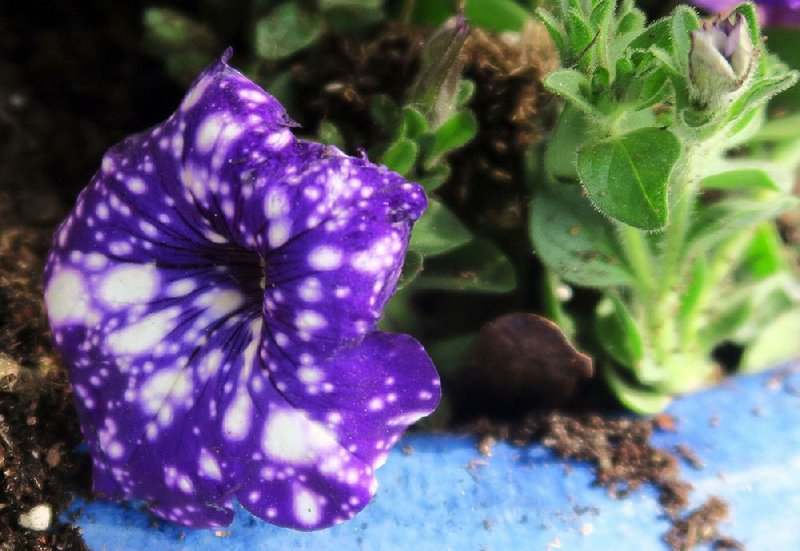I am not sure Mother Nature knows which season we are in. We have summerlike conditions one day, spring the next and then winter reappears for a few hours.
We are definitely way behind where we were last spring, and where you live in the state is making a huge difference in how advanced your spring-blooming plants are. But each warm, sunny day is like a shot in the arm for our plants, and they burst into bloom.
So far it is turning into a beautiful spring in spite of our colder winter.
• Most plants are beginning to leaf out, but not all. Start assessing whether yours have winter damage and begin the cleanup. There is still time to prune summer-blooming plants such as crape myrtles, rose of Sharon, summer-blooming spirea (but not the spring-blooming bridal wreath spirea), butterfly bush and more. Don't prune any spring-blooming plants until after they finish flowering.
• For evergreen shrubs such as boxwoods and holly, you can prune as needed now through early summer.
• Ornamental grasses are beginning to grow, and if you have not pruned yours, pull back the old, dead growth to see how tall the new growth has become and prune above that line. You don't want cut edges on your new leaves.
• Vegetable gardening is in full swing but, again, cooler weather delayed planting in some gardens. There is still time to plant cool-season vegetables including lettuce, broccoli, greens and onions, but get it done by mid-month. Wait for the soil and air to warm up before planting tomatoes, peppers and eggplant -- even though garden centers have been selling them for more than a month. You won't be gaining anything if we get another cold blast and the plants are stunted or you have to replace them.
• Lawns are beginning to green up, but there is competition from the winter weeds or, as some call them, "wildflowers." Whether you call them weeds or wildflowers, flowering plants in the lawn mean seeds are forming and your wildflower weeds will increase next year. If you aren't enamored of the flowering weeds, keep them mowed to prevent seed set. Many of the weeds will be dying out in a few weeks as the weather warms. Herbicide use now is not very effective and can actually hinder your lawn. Your lawn is in transition from winter dormancy to summer green. Keep the lawn mowed and hold your first application of fertilizer until the lawn is totally green. Then you can worry about summer weeds.
• Many gardeners are champing at the bit to move their houseplants back outside and reclaim some of their indoor living space. Again, patience, please. Even though we are seeing some really warm days, we are still having some really cool nights, and houseplants could suffer cold damage. Waiting until early May is not going to hurt, especially if you live in the northern tier of the state. If you have plants that are too pot-bound, dividing them or repotting them is a great chore to do when you do move them outside.
• Winter annuals are doing well in some gardens, but in others they have barely recovered from winter. If yours still look good, fertilize and enjoy them one more month. But if yours are non-existent or barely there, start replanting with warm-season annuals. Some will tolerate cool nights better than others. You can plant callibrachoa, verbena, petunias and begonias, but hold off on lantana, periwinkle and summer impatiens. In addition to more annuals, visit your local nurseries and garden centers to see the new selections of perennials, shrubs and trees. Consider when in the year you want more color in the garden and choose plants that can supply it.
PETUNIAS
Petunias originated in South America, but the petunias that we grow today belong to a large family of hybrids derived from many species.
The mature size of these varieties varies from 6 inches to 18 inches tall with a spread from 18 inches to 4 feet.
Petunias can be found in every color of the rainbow in solids, or with contrasting veins or edges, and in star patterns. The flowers may be large or small, ruffled, fringed or double.
Some petunias may not be too happy when temperatures reach the 90s for extended periods of time, unless they have been well cared for with ample water and fertilizer. Older varieties can lose vigor and quit blooming during mid-to-late high summer temperatures. Plant breeders have tried to deal with this by developing petunia cultivars that are especially vigorous and more heat-tolerant.
The Wave petunias were among the first of the heat-tolerant varieties, and the Supertunia petunias are another group of vigorous, heat-tolerant petunias.
One of our Arkansas Diamond selections from last year is the Supertunia "Vista Bubblegum." I have also been impressed with the Supertunia "Vista Fuchsia."
But even with heat-tolerant varieties, success can be measured by the frequency of light fertilizer applications. These annuals can bloom from spring until frost -- provided they get enough nutrition.
They can be used for color masses in the ground, in borders, containers, hanging baskets or as a seasonal groundcover.
Petunias need full sun and, while tolerant of a wide range of soil types, they do best in well-drained, light soil.
Buy healthy young petunias that are short and compact. Leggy, thin plants are slow to gain vigor. Young plants not yet in full bloom will often establish themselves more quickly.
Janet B. Carson is a horticulture specialist for the University of Arkansas Cooperative Extension Service.
HomeStyle on 03/31/2018

